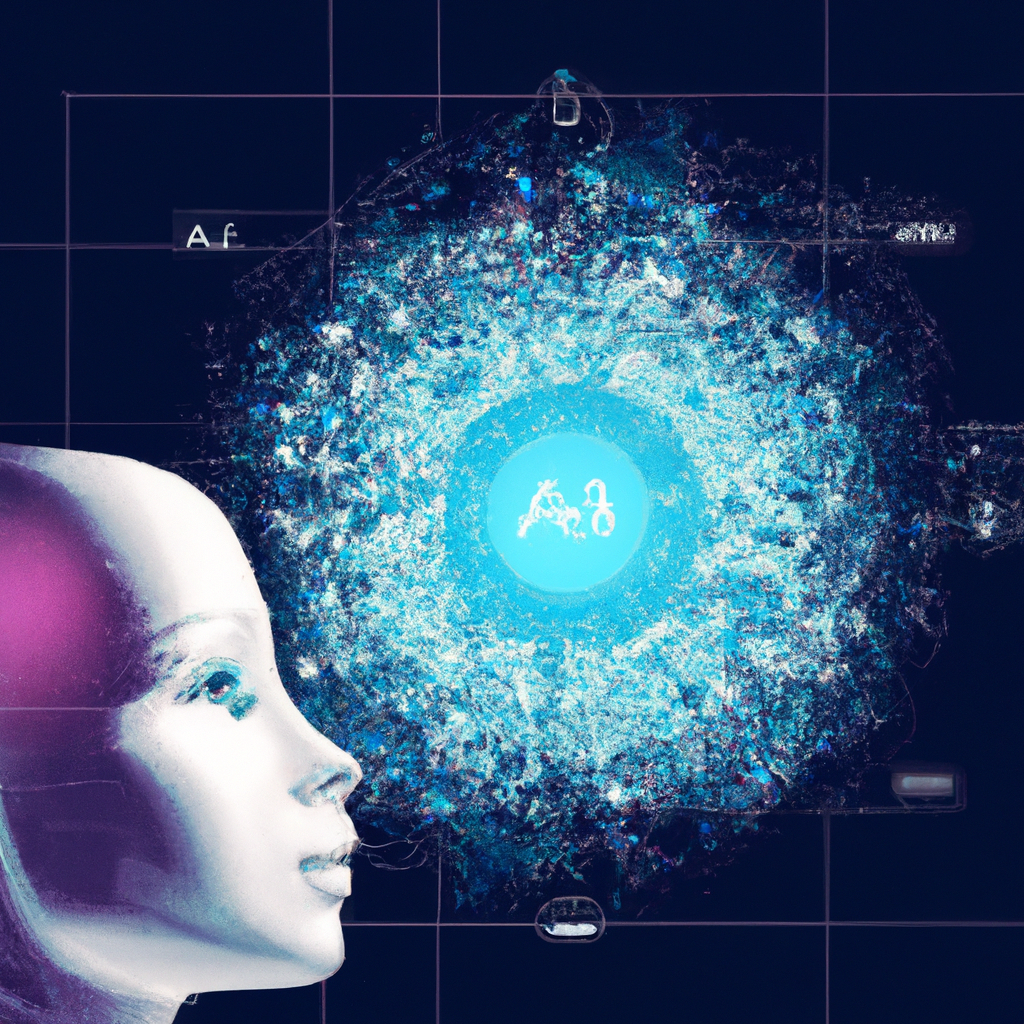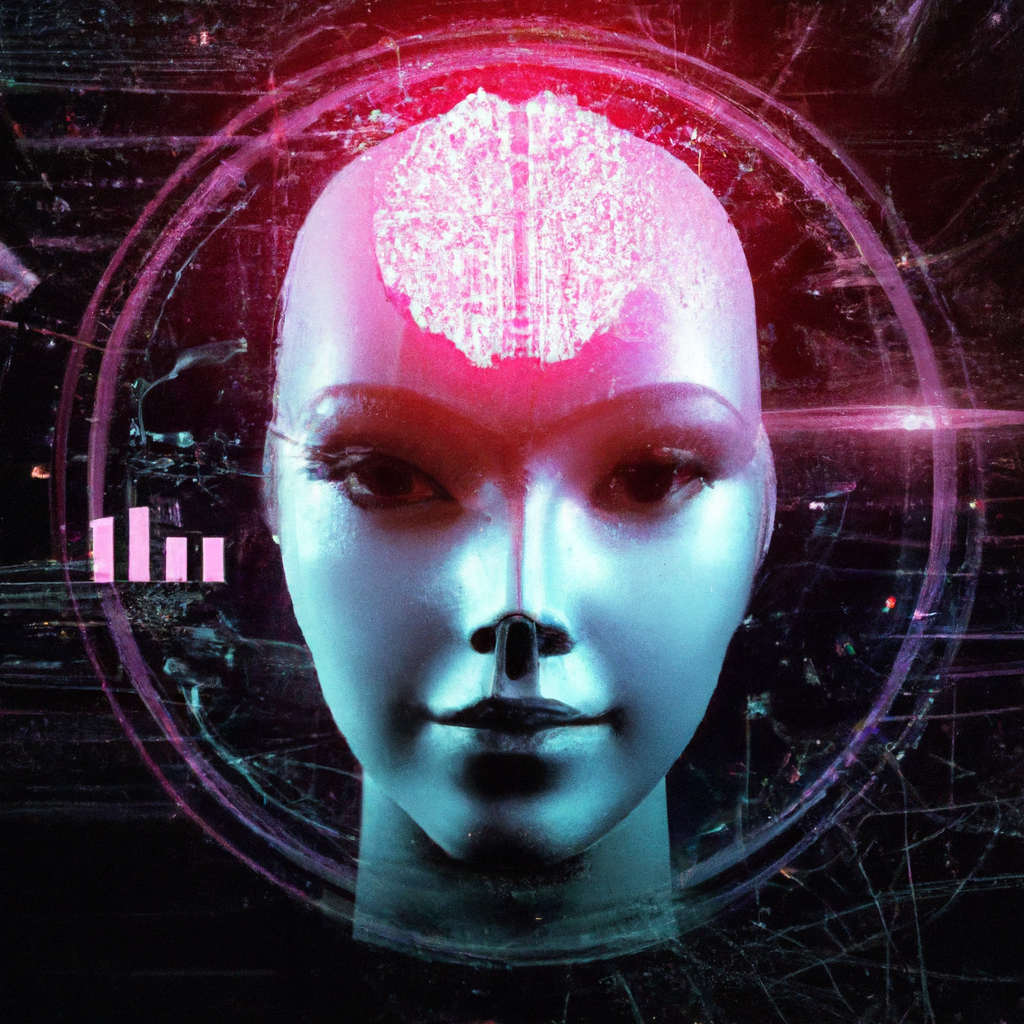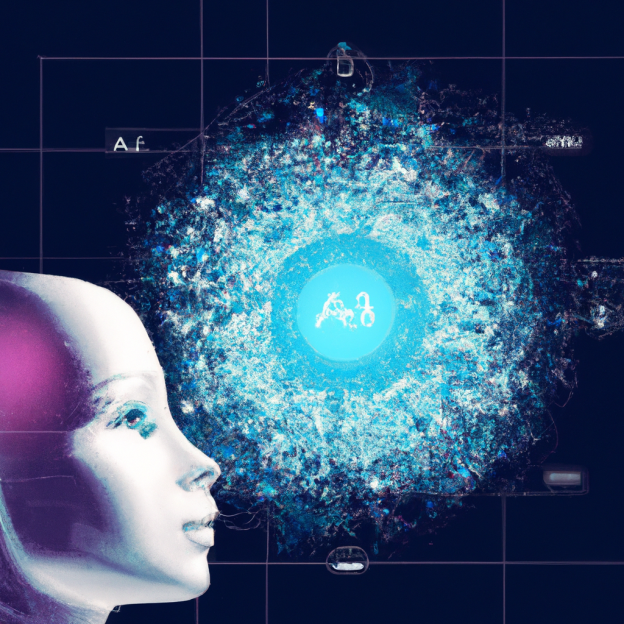Imagine a future where machines take over tasks once performed by humans, leaving us to wonder what is left for us to do. From automated customer service agents to self-driving cars, AI technology is rapidly advancing and threatening to replace more and more jobs. In this article, we will explore the various industries and professions that are being taken over by artificial intelligence, shaking up the job market and sparking the question: what is being replaced by AI? Artificial Intelligence (AI) is revolutionizing various industries and transforming the way we work. As technology advances, job roles that were once exclusively performed by humans are now being replaced by AI. In this article, we will explore some of the job roles, administrative tasks, industrial processes, healthcare functions, financial services, transportation systems, education sector, retail industry, agriculture, and creative fields that are being impacted by AI.
Job Roles Being Replaced by AI
Customer Service Representatives
One of the significant job roles being replaced by AI is that of customer service representatives. AI-powered chatbots and virtual assistants are becoming increasingly adept at resolving customer queries, providing instant responses, and offering personalized recommendations. With the ability to understand natural language, AI chatbots can handle large volumes of customer inquiries simultaneously, reducing the need for human intervention. This not only improves efficiency and reduces costs for businesses but also allows customers to receive prompt and accurate assistance.
Data Entry Clerks
With the advancement of AI, the need for manual data entry clerks is diminishing. AI technologies, such as optical character recognition (OCR), can automatically extract and digitize data from various sources, eliminating the need for human intervention. This not only speeds up the data entry process but also reduces errors that often occur with manual data entry. AI-powered data entry systems are capable of handling vast amounts of data quickly and accurately, enhancing productivity in organizations.
Telemarketers
Telemarketing, once a popular method for promoting products and services, is gradually being replaced by AI-powered systems. AI chatbots can engage in conversations with potential customers, answer their queries, and even make persuasive sales pitches. These chatbots can analyze customer preferences and behavior to provide personalized recommendations, making them an effective replacement for traditional telemarketing. Additionally, AI chatbots can make calls at any time, reaching a wider audience and increasing the efficiency of the marketing process.
Warehouse Workers
AI is transforming the warehousing industry by automating various tasks traditionally performed by warehouse workers. Automated systems, such as robotic material handling equipment, can efficiently move, sort, and stack goods in warehouses. These systems use AI algorithms to optimize inventory management, track products, and streamline the supply chain. By replacing manual labor, AI improves operational efficiency, reduces human errors, and increases safety in warehouse environments.
Delivery Drivers
The rise of autonomous vehicles is set to disrupt the role of delivery drivers in transportation. AI-powered self-driving vehicles are being developed and tested by various companies, including those in the logistics industry. These vehicles have the potential to significantly reduce delivery costs and increase delivery efficiency. With advanced sensors and AI algorithms, autonomous delivery vehicles can navigate roads, avoid obstacles, and deliver packages with minimal human intervention. While human drivers may still be required for certain tasks, the need for manual delivery drivers may decrease as AI technology continues to advance.
Administrative Tasks Replaced by AI
Scheduling and Appointment Management
AI-powered systems are transforming scheduling and appointment management in various industries. Intelligent scheduling software can efficiently manage calendars, arrange appointments, and coordinate meetings. These systems can analyze various factors, such as availability, location, and preferences, to suggest optimal time slots for appointments. AI algorithms continually learn from user interactions, improving the accuracy and efficiency of scheduling over time. With AI handling scheduling tasks, human administrators can focus on higher-level responsibilities, enhancing productivity in organizations.
Data Analysis and Report Generation
Data analysis and report generation tasks are being automated by AI, reducing the need for human intervention. AI algorithms can process vast amounts of data, identify patterns, and extract insights at a speed and accuracy that is impossible for humans to match. With AI-powered data analysis tools, businesses can obtain actionable insights from complex datasets, enabling informed decision-making. Furthermore, AI can automatically generate comprehensive reports, summarizing key findings and presenting them in a visually appealing manner. This not only saves time but also ensures consistency and accuracy in reporting.
Email and Communication Management
AI is revolutionizing email and communication management by automating various tasks. AI-powered email filters can categorize and prioritize incoming messages, helping users focus on the most important ones. These filters can detect spam, identify important messages, and even draft replies based on previous interactions. AI chatbots can also handle repetitive communication tasks, answering common inquiries, and providing information instantly. By automating email and communication management, AI technology saves time, enhances organization, and improves overall efficiency.

Industrial Processes Replaced by AI
Assembly Line and Manufacturing
AI is transforming assembly line and manufacturing processes by introducing robots and automated systems. AI-powered robots are capable of performing repetitive tasks with precision, speed, and consistency. These robots can handle complex assembly processes, reducing the need for human involvement and minimizing the risk of errors. Furthermore, AI algorithms can optimize production schedules, predict maintenance needs, and improve overall efficiency in manufacturing operations. By integrating AI into industrial processes, organizations can increase productivity, reduce costs, and ensure high-quality output.
Quality Control and Inspection
Quality control and inspection tasks are being revolutionized by AI technologies. AI-powered systems can accurately and efficiently detect defects, anomalies, and inconsistencies in products. Using computer vision and machine learning algorithms, these systems can analyze images, videos, or sensor data to identify quality issues. This eliminates the need for manual inspection, saving time and ensuring consistent quality standards. AI-powered quality control systems can improve accuracy, reduce waste, and enhance customer satisfaction in manufacturing processes.
Predictive Maintenance
AI is revolutionizing the field of predictive maintenance, ensuring the optimal performance and longevity of industrial equipment. By analyzing sensor data, AI algorithms can identify potential equipment failures or maintenance needs. This enables organizations to schedule maintenance activities proactively, reducing the risk of unexpected breakdowns and minimizing downtime. Predictive maintenance powered by AI not only improves operational efficiency but also saves costs associated with unscheduled maintenance and equipment failures.
Healthcare Functions Impacted by AI
Medical Imaging Analysis
AI algorithms are transforming medical imaging analysis, improving accuracy and efficiency in diagnosing various conditions. Deep learning algorithms can analyze medical images, such as X-rays, MRIs, and CT scans, to detect abnormalities, tumors, or other medical conditions. With the ability to process large volumes of image data, AI technology can provide accurate and timely diagnoses, assisting healthcare professionals in making informed treatment decisions. AI-powered medical imaging analysis not only improves patient outcomes but also reduces the time and cost associated with manual image interpretation.
Surgical Assistance
AI is revolutionizing surgical procedures by providing real-time assistance to surgeons. AI-powered robotic systems can assist surgeons with precise movements, enhancing surgical accuracy and minimizing invasiveness. These robotic systems use advanced sensors and AI algorithms to analyze patient data, provide guidance during procedures, and enhance surgical outcomes. With AI-enabled surgical assistance, surgeons can perform complex procedures with greater precision, reducing the risk of complications and improving patient recovery rates.
Patient Monitoring and Care
AI is transforming patient monitoring and care, enabling continuous and personalized healthcare. Wearable devices equipped with AI algorithms can monitor vital signs, detect abnormalities, and provide real-time alerts to healthcare professionals. These devices can track patient activity levels, sleep patterns, or medication adherence, empowering patients to take control of their health. AI-powered patient monitoring systems can also analyze large datasets to identify patterns or trends, enabling proactive and personalized healthcare interventions. By leveraging AI technology, healthcare providers can improve patient outcomes, optimize treatment plans, and reduce healthcare costs.

Financial Services Affected by AI
Fraud Detection
AI is revolutionizing fraud detection in the financial industry by automating the identification of suspicious activities and transactions. AI algorithms can analyze large volumes of data, including transaction history, user behavior, and external factors, to identify potential fraud patterns. By continuously learning from new data, AI-powered fraud detection systems can adapt to evolving fraud techniques and accurately detect fraudulent activities in real time. This not only reduces financial losses for businesses but also enhances security and protects customers from fraud.
Investment and Trading
AI is transforming investment and trading practices by providing powerful data analysis and predictive capabilities. AI algorithms can analyze financial data, market trends, news, and social media sentiment to make informed investment decisions. With the ability to process large amounts of data quickly and accurately, AI-powered trading systems can identify potential trading opportunities, optimize investment strategies, and make real-time trading decisions. These systems can also learn from historical data to continuously improve their performance. AI technology in investment and trading opens up new possibilities for portfolio optimization and risk management.
Virtual Assistants and Chatbots
AI-powered virtual assistants and chatbots are revolutionizing customer service in the financial industry. These intelligent systems can assist customers with account inquiries, product information, and even provide personalized financial advice. Virtual assistants can analyze customer data, preferences, and past interactions to offer tailored recommendations, helping customers make informed financial decisions. Chatbots provide instant support, 24/7 availability, and efficient handling of customer queries. By integrating virtual assistants and chatbots, financial institutions can enhance customer satisfaction, reduce response times, and streamline their operations.
Transportation Systems Transformed by AI
Autonomous Vehicles
The emergence of autonomous vehicles is set to transform the transportation industry. AI-powered self-driving cars and trucks have the potential to reduce accidents, increase fuel efficiency, and optimize traffic flow. These vehicles use advanced sensors, AI algorithms, and real-time data analysis to navigate roads, detect obstacles, and make driving decisions. Autonomous vehicles equipped with AI technology can revolutionize transportation by improving safety, reducing congestion, and increasing productivity by allowing passengers to work or rest during their commutes.
Route Optimization
AI is revolutionizing route optimization in transportation systems, improving efficiency and reducing costs. AI algorithms can analyze various factors, such as traffic conditions, weather forecasts, and delivery schedules, to optimize routes for maximum efficiency. By continuously learning from real-time data, AI-powered route optimization systems can adapt to changing conditions and provide real-time recommendations to drivers or transportation management centers. This not only reduces fuel consumption but also decreases delivery times, enhances customer satisfaction, and improves overall transportation operations.
Traffic Management
AI is transforming traffic management by enabling intelligent control systems that optimize traffic flow and reduce congestion. AI algorithms can analyze real-time traffic data, including vehicle densities, road conditions, and traffic patterns, to make informed decisions in real time. AI-powered traffic management systems can dynamically adjust traffic signal timings, reroute vehicles, or provide real-time traffic updates to drivers. By optimizing traffic flow, AI technology reduces congestion, enhances road safety, and improves overall transportation efficiency.
Education Sector Influenced by AI
Automated Grading and Assessment
AI is transforming the assessment process in the education sector by automating grading and providing instant feedback to students. AI-powered systems can analyze students’ answers, essays, or projects, effectively grading them based on pre-defined criteria. These systems can provide personalized feedback, highlighting strengths and weaknesses in student performance. By automating grading and assessment, AI technology saves teachers time and enables them to focus on designing effective learning experiences.
Personalized Learning
AI is revolutionizing personalized learning by adapting educational content to individual students’ needs, preferences, and learning styles. AI-powered learning systems can analyze students’ performance, interactions, and progress to suggest tailored learning materials or activities. These systems can identify knowledge gaps and provide targeted interventions, ensuring students receive personalized support and instruction. By leveraging AI, educators can enhance student engagement, learning outcomes, and accelerate the learning process.
Virtual Classrooms
AI is transforming traditional classrooms by introducing virtual learning environments that offer personalized and immersive experiences. AI-powered virtual classrooms can simulate real-world scenarios, engage students in interactive learning activities, and provide instant feedback. These virtual environments can also adapt to individual students’ needs, enabling personalized instruction and collaborative learning opportunities. By leveraging AI in virtual classrooms, educators can overcome geographical barriers, enhance accessibility, and provide students with engaging and effective learning experiences.
Retail Industry Changes due to AI
Inventory Management
AI is transforming inventory management in the retail industry by optimizing stock levels, reducing out-of-stock situations, and improving supply chain efficiency. AI algorithms can analyze historical sales data, demand forecasts, and external factors, such as weather or promotions, to predict future demand. By continuously learning from real-time data, AI-powered inventory management systems can dynamically adjust stock levels, reorder products, and streamline the procurement process. This not only prevents overstocking or understocking but also improves customer satisfaction by ensuring products are available when they are needed.
Recommendation Engines
AI-powered recommendation engines are revolutionizing personalized shopping experiences in the retail industry. These engines analyze customer data, preferences, purchase history, and browsing behavior to provide tailored product recommendations. By understanding customers’ individual preferences, AI recommendation engines can suggest relevant and personalized products, increasing cross-selling and upselling opportunities. Additionally, AI-powered recommendation systems can continually learn from customer interactions, enhancing the accuracy and relevance of their recommendations over time.
Checkout and Payment Process
AI is transforming the checkout and payment process in retail by introducing frictionless and secure payment methods. AI-powered systems can analyze customer behavior, purchase history, and payment patterns to detect potential fraud or suspicious activities. This enhances security and protects both businesses and customers from fraudulent transactions. Furthermore, AI-powered self-checkout systems are being implemented in retail stores, reducing the need for manual cashier services and speeding up the checkout process. By leveraging AI technology, the retail industry can enhance customer convenience, improve security, and streamline the payment process.
Agriculture and Farming Affected by AI
Crop Monitoring and Management
AI is revolutionizing crop monitoring and management in agriculture, enhancing productivity and reducing resource wastage. AI-powered systems can analyze satellite imagery, weather data, and soil conditions to optimize irrigation, fertilization, and pest control. By identifying crop health issues and nutrient deficiencies, AI technology enables proactive interventions and improves crop yields. AI algorithms can also provide real-time alerts and insights on potential risks, such as disease outbreaks or pest infestations, allowing farmers to take immediate action. With AI-powered crop monitoring and management, agricultural practices become more efficient, sustainable, and profitable.
Harvesting and Sorting
AI is transforming harvesting and sorting processes in agriculture with the introduction of robotic systems. AI-powered agricultural robots can accurately and efficiently harvest crops, reducing the need for manual labor and increasing harvesting speed. These robots use advanced sensors, computer vision, and AI algorithms to identify ripe produce, handle delicate crops, and sort harvested fruits or vegetables based on quality or size. By automating harvesting and sorting tasks, AI technology improves efficiency, reduces labor costs, and ensures consistent product quality in agriculture.
Livestock Monitoring
AI is revolutionizing livestock monitoring in the agricultural industry, improving animal health and welfare. AI-powered systems can analyze sensor data, such as temperature, activity levels, or feeding patterns, to monitor the health and behavior of livestock. By detecting deviations from normal patterns, AI algorithms can provide real-time alerts to farmers, enabling prompt interventions and improving animal welfare. Furthermore, AI technology can optimize feeding schedules, monitor environmental conditions, and provide insights on livestock productivity. By leveraging AI in livestock monitoring, farmers can enhance efficiency, minimize risks, and improve overall animal management.
Creative Fields and AI
Content and Copywriting
AI is transforming content and copywriting in creative fields by providing automated and personalized content generation. AI-powered systems can analyze large volumes of data, including user preferences, online trends, and language patterns, to generate engaging and tailored content. These systems can create blog posts, news articles, or marketing copies that mimic human writing styles and resonate with target audiences. While AI-generated content can be a valuable tool for generating ideas, human creativity and nuanced writing remain essential for producing truly unique and emotionally impactful content.
Art and Design
AI is revolutionizing art and design by creating new possibilities and pushing the boundaries of creativity. AI algorithms can generate digital artwork, compose music, or design graphics based on predefined rules or styles. These AI-generated works can serve as sources of inspiration for artists and designers, facilitating the creative process. Furthermore, AI-powered tools can assist in creating realistic visual effects, enhancing photo editing capabilities, or automating repetitive design tasks. By integrating AI into the creative process, artists and designers can unlock new artistic expressions and streamline their workflows.
Music Composition and Production
AI is transforming music composition and production by providing powerful tools for creating, arranging, and producing music. AI algorithms can analyze vast amounts of musical data, trends, and styles to generate original compositions or assist in music creation. With AI-powered tools, artists can experiment with new sounds, harmonies, or arrangements, pushing the boundaries of music creation. Additionally, AI technology can enhance music production by automating repetitive tasks, such as mixing and mastering, or providing real-time suggestions for improving sound quality. While AI can be a valuable asset in music composition and production, human creativity and emotions remain vital in producing truly meaningful and unique musical experiences.
In conclusion, AI is revolutionizing various industries and transforming the way we work. From job roles being replaced by AI to administrative tasks, industrial processes, healthcare functions, financial services, transportation systems, education sector, retail industry, agriculture, and creative fields, AI is reshaping our world. While AI brings new opportunities for increased efficiency, productivity, and personalization, it is important to find the right balance between human expertise and AI technology. By leveraging the power of AI and human creativity, we can shape a future where humans and machines work together to create a better world.
